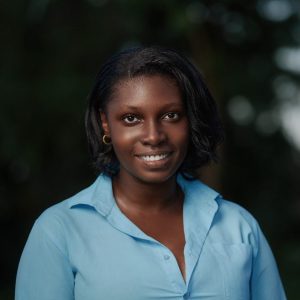Seeking to connect Guyanese through film
AS Guyanese living in Guyana, it is easy to become immersed in our country’s rich cultural and traditional way of life. As Guyanese, we are at the forefront of the nation’s cultural displays, festivals, and tales of our heritage passed down from generation to generation. As a people, our identities are rooted in us from birth, with the celebration of every Mashramani, Emancipation, and Diwali. But some Guyanese living beyond our waters search for a stronger connection with their motherland.
One of those people is Corey Brammah Semple. Corey is a writer, photographer, and filmmaker living in Queens, New York. Born to Guyanese parents, Corey has always felt a need to strengthen his bond with Guyana. A few years ago, he put his vision into action with the development of Guyapora. Corey picked up a camera and embarked on a journey to not only visit Guyana but to bring our nation closer to those living abroad with his documentary. Corey began Guyapora as a way to bring Guyanese and the Diaspora closer, and to show that no matter where you are, you are still Guyanese.
Who is Corey Semple?
Corey’s love for filmmaking was sparked during his senior year of high school. He explained that it was a simple film class that piqued his interest, and in the summer of that year, a young Corey bought his first camera. As a young man, the idea of visually telling a story filled him with enthusiasm.
He remembers taking shots of everything around him, seeking to capture as much of the moment as possible. He stated that, “I was capturing everything: family events, football and basketball games, and friends’ parties. I was just capturing memories.” As much as he loved capturing the moment, Corey sought to tell stories that would have an impact.
This is what motivated his first films. He has partnered with other small filmmakers like himself, many of whom are also second-generation Caribbean people. Many of his works up until now have been works of fiction, and almost all of them have been connected to the Caribbean or Africa in some way or form. With the introduction of Guyapora, however, Corey plans to tell the true story of Guyana.
Apart from the influence of his parents, both of whom come from Berbice, Corey’s love for all things Guyanese was supported by his community. He spent his childhood around many other Guyanese and Caribbean nationals. Even his best friend and later colleague was from Suriname. He shared that, “I was raised by my mother, father, and grandmother. I was raised around the heavy influence of Guyanese.”
He added, “I grew up with everything of Guyanese stature, the Guyanese heritage, and food.” As much as Guyana was a part of his life, Corey felt the profound need to be a part of Guyana. “What was missing was just me going to Guyana physically,” he said A few years ago, he made the trip to Guyana for the first time, and coming to Guyana felt more like coming home.
The Development of Guyapora
The first time Corey came to Guyana was during the pandemic. While all the world was at a stalemate, Corey was venturing through Guyana. Since then, he has worked tirelessly, making several trips back to Guyana. He describes his time in Guyana as simply amazing. Corey hoped to form stronger bonds by coming to Guyana, and in many ways, he achieved just that. One of the most memorable parts of his visits is the family members he meets and the places he sees and experiences.
In his first trip to Guyana, he shared, “I had an amazing time. I saw people who I have not seen in years.” For Corey, coming to Guyana was rediscovering his family, their roots, and himself.
Guyapora was first developed as a thought. Corey explained that during his time in Guyana, he captured as much of the country as he could, but his true ambition was to make a film. But this would be easier said than done. He admitted that initially, he was unsure of where to start.
He knew he wanted to work with other filmmakers, and when he returned from his first trip, he made some calls, and Guyapora was born. He shared that, “I started this plan to document more about the history of Guyana. More about culture, tradition, and village life and the surrounding areas. And that blossomed into Guyapora. It blossomed into something that I did not think would come about.”
Bringing the vision of Guyapora to life is, on its own, a massive undertaking. But the lack of support is what Corey says is the hardest aspect of filmmaking anywhere. “One issue has been the lack of support. I wish that there was more support for the filmmaking industry in Guyana.” He shared that finding authentic sources of Guyanese history and folklore is also challenging, saying, “I wish there were more people preserving the history and culture; I am seeing more of it dwindle away.” Corey and his counterparts working in Guyapora are dedicated to their mission of showing Guyana to the rest of the world and creating something that connects people.



.jpg)











